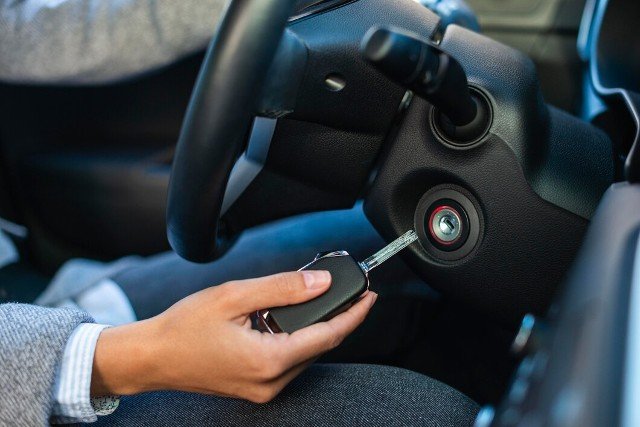Hitting the road safely means more than just following traffic rules; interlock devices are unsung heroes in this tale. Crafted to stop those with a DUI history from driving tipsy, these devices are vital for everyone’s safety. In this post, we’ll journey into the realm of interlock devices: from setting them up, how to keep them in tip-top shape, to the big “why” behind their role in endorsing smart driving.
What Are Interlock Devices?
Picture a mini breathalyzer snugly fitted on your vehicle’s dashboard; that’s an ignition interlock device (IID) for you. Its job? To check the driver’s blood alcohol level before the vehicle roars to life. If you’ve had one too many and your alcohol level is over the set mark, your car simply won’t start. It’s like a silent sentinel ensuring you don’t drive under the influence.
Why Are Interlock Devices Important?
Interlock devices are like safety nets for drivers and the community at large. Here’s why they’re so vital:
- Blocking Boozy Drives: These devices stand as gatekeepers, making sure that those under the influence can’t just hop in and drive away.
- Breaking the DUI Cycle: Research says that with interlock devices, the chances of someone committing another DUI dip drastically. It’s like a constant reminder to make better choices.
- Guarding the Innocent: By halting intoxicated driving, these gadgets play a part in safeguarding lives and minimizing accident risks.
If you’re thinking of getting one, there’s a variety to choose from. Just be sure you’re shaking hands with a reputable provider. The cost is certainly worth it when you consider the benefits above.
Installation of Interlock Devices
Installing an interlock device may seem like a complex task, but it’s a crucial step in promoting road safety. Here’s what you need to know about the installation process:
1. Professional Installation
Interlock devices should always be installed by certified professionals. Attempting to install one yourself could result in incorrect placement or calibration, rendering the device ineffective. So, leave it to the experts.
2. Location Matters
The installation technician will carefully select the optimal location for the interlock device within your vehicle’s dashboard. This location ensures accurate readings and ease of use.
3. Electrical Connection
The device will be connected to your vehicle’s electrical system. This connection allows the device to monitor the ignition and collect data on breathalyzer tests.
4. Calibrating the Device
After installation, the technician will calibrate the device to ensure precise BAC measurements. Calibration is essential for accurate results.
5. Training
Before you can use the interlock device, the technician will provide you with thorough training on how to use it. This includes instructions on providing breath samples, understanding alerts, and maintenance.
6. Testing the Device
Before you leave the installation facility, the technician will perform tests to confirm that the device is functioning correctly. This ensures your safety and the device’s reliability.
Using an Interlock Device
Now that your interlock device is installed, here’s what you should know about using it on a day-to-day basis:
1. Breath Sample Tests
Every time you start your vehicle, the interlock device will require a breath sample. Follow the on-screen instructions to provide a sample, and the device will determine if your BAC is within the legal limit.
2. Rolling Retests
In some cases, the device may require rolling retests while you are driving. This ensures that you remain sober throughout your journey and discourages attempts to circumvent the system.
3. Alerts and Violations
If the device detects alcohol above the preset limit during a breath test or rolling retest, it will trigger an alert. Repeated violations may result in consequences, such as extended device usage or reporting to authorities.
4. Maintenance
Regular maintenance is crucial to keeping your interlock device in good working condition. Follow the manufacturer’s guidelines for cleaning and care, and schedule required maintenance appointments with a certified technician.
Maintenance of Interlock Devices
Maintaining your interlock device is vital for its effectiveness and your ongoing compliance with legal requirements. Here’s what you need to know about keeping your device in top shape:
1. Cleaning
Clean the device regularly, following the manufacturer’s instructions. Use a soft cloth and a mild, alcohol-free cleaner to wipe the device’s surfaces. Avoid using abrasive materials that could damage the device.
2. Avoid Tampering
Never attempt to tamper with the device or disconnect it on your own. Tampering can result in legal consequences and render the device ineffective.
3. Scheduled Maintenance
Most interlock devices require periodic maintenance appointments. These appointments are crucial for calibrating the device and ensuring its accuracy. Missing scheduled maintenance could lead to issues with the device’s functionality.
4. Reporting Issues
If you notice any issues with your interlock device, such as false positives or errors, contact your service provider immediately. They can assess the problem and make any necessary adjustments or repairs.
Conclusion
Interlock devices are a vital tool in the fight against drunk driving. Their installation and maintenance are essential steps in promoting responsible and safe driving habits. By preventing individuals from operating vehicles while intoxicated, these devices save lives and contribute to safer roads for all.



